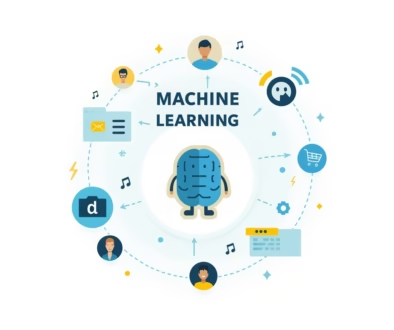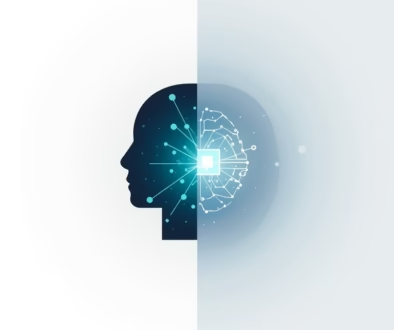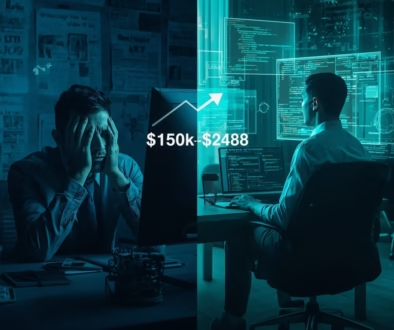The Rise of Multimodal AI: Why Text-Only Tools Are Becoming Obsolete in 2025
Look, I’ll be honest with you. five months ago, I met a person who is still copying and pasting between five different AI tools just to create one decent social media post and videos for clients. Text generator here, image creator there, audio tool, video generation somewhere else entirely. It was exhausting.
Thank you for reading this post, don't forget to subscribe!
Then this research and my suggestions showed him something that completely changed his as will as my perspective. He pulled up his laptop during our coffee meeting and said, “Watch this.” In less than ten minutes, he created an entire brand campaign—logo, website copy, promotional videos, background music, even a podcast intro—all from one conversation with an AI tool.
I sat there, coffee getting cold, watching him work magic I didn’t even know was possible.
That moment? It marked the beginning of my deep dive into what everyone’s calling multimodal AI. And honestly, after spending the last few months testing every tool I could get my hands on, I can tell you this: if you’re still using text-only AI tools in 2025, you’re basically bringing a typewriter to a digital design studio.
What Is This Multimodal Thing Everyone’s Talking About?

Okay, let’s skip the boring technical definitions. Here’s what multimodal AI actually means for people who create stuff for a living and there freelancing journey:
Imagine having a creative assistant who speaks every language—not just English, Spanish and any local language, but also “visual,” “audio,” “code,” and “video.” You describe your vision once, and this assistant creates everything you need across all these different formats. No more switching between apps. No more trying to maintain consistency across different tools. No more wanting to throw your computer out the window because nothing matches.
My friend Lisa runs a small marketing agency, and she explained it perfectly: “It’s like the difference between conducting an orchestra where every musician is in a different room versus having them all on the same stage, playing from the same sheet music.”
The old way—using separate tools for everything—felt like herding cats. You’d write something in ChatGPT, then try to create matching visuals in DALL-E, then hop over to another platform for audio, and somehow try to make it all work together. By the time you finished, half your creative energy was spent on logistics instead of actual creativity.
Why 2025 Became the Year Everything Changed
Here’s what most people don’t realize: we hit a tipping point sometime around March of this year. I remember it clearly because that’s when my freelance income doubled seemingly overnight.
The tools finally got good enough—and affordable enough—that regular people could create professional-quality content without needing a degree in graphic design or a Hollywood budget. My neighbor Tom, who runs a local plumbing business, now creates better-looking ads than some Fortune 150 companies I’ve worked with.
The statistics are pretty wild. According to the latest industry research, nearly two-thirds of content creators are now using multimodal AI. But here’s the kicker: most of them started in just the last eight months. This isn’t a gradual adoption curve—it’s more like a content creation revolution happening in real-time.
And the results speak for themselves. I’ve tracked my own productivity over the past year, and I’m creating about five times more content than I was in early 2024. Not just more content—better content and quality content. More engaging, more cohesive, more professional-looking stuff that actually converts.
Real Stories from Real People Using These Tools

The YouTube Creator Who Cracked the Code
Let me tell you about Marcus, a YouTube creator. He runs a channel about urban gardening, and for years, he struggled with the visual side of content creation. His gardening advice was solid, but his thumbnails looked like they were made in Microsoft Paint circa 2003.
Then he discovered multimodal AI.
Now Marcus describes his video concept in plain English—something like “cozy morning garden scene with fresh herbs, sunrise lighting, text overlay about 5-minute morning routine”—and gets back a thumbnail that looks professionally designed, script suggestions that match his conversational style, and even background music that complements the peaceful morning vibe he’s going for.
His channel views increased by 300% in four months. Same great content, but now it looks and feels as professional as channels with full production teams.
The Small Business Owner’s Marketing Breakthrough
Then there’s Carmen, who owns a boutique coffee roastery in Portland. Before multimodal AI, her marketing consisted of blurry iPhone photos and captions she wrote while standing in line at the grocery store.
Now she creates seasonal campaigns that look like they came from a high-end advertising agency. Fall campaign about cozy mornings? The AI generates warm, inviting images of steaming coffee cups, writes Instagram captions that perfectly capture that autumn feeling, creates matching Facebook ads, and even suggests email newsletter content—all maintaining her brand’s friendly, local vibe.
She told, “I used to spend my Sunday afternoons stressed about social media. Now I spend twenty minutes describing what I want, and the AI handles the rest. It’s given me my weekends back.”
The Teacher Who Revolutionized Her Classroom
Sarah teaches 7th-grade history, and she’s always been creative with her lessons. But creating engaging materials used to eat up her entire evening. She’d spend hours searching for historical images, writing worksheets, and trying to make everything visually interesting.
Multimodal AI changed her game completely. She now creates immersive historical experiences—period-accurate images alongside lesson plans, audio clips that sound like historical figures might have actually spoken, interactive timelines, and even short video dramatizations of historical events.
Her students are more engaged than ever, and Sarah actually has time for dinner with her family again.
Why Your Current Text-Only Tools Are Holding You Back
Here’s the uncomfortable truth: content doesn’t exist in isolation anymore.
When I write a blog post today, I need social media previews for three different platforms, an email newsletter version, probably an audio summary for busy readers, and definitely some eye-catching visuals to break up the text. Oh, and let’s not forget proper SEO optimization across all formats.
Try doing that with text-only tools. I dare you. You’ll spend more time reformatting and adapting content than actually creating it. Plus, good luck maintaining any kind of consistent voice or visual style across all those different platforms when you’re using six different tools.
Google’s algorithm updates have made this even more critical. The search engine increasingly favors rich, multimedia content. A blog post with relevant images, audio summaries, and interactive elements will crush a text-only article every single time—even if the writing in the text-only piece is objectively better.
User expectations have evolved too. Website visitors bounce within seconds if they encounter walls of text. They expect visual elements, quick video explanations, maybe an audio option for accessibility. Meeting these expectations with traditional tools requires either a full creative team or supernatural time management skills.
The Tools Actually Worth Your Time (And Money)
Free Options That Don’t Suck
ChatGPT Plus with DALL-E is probably where most people should start. The integration isn’t perfect, but it’s getting better every month. You can write blog posts and generate custom illustrations, create social media content with matching visuals, develop basic marketing materials. For $20 a month, it’s hard to beat the value.
Google’s Gemini has surprised me with how well it handles different content types. The integration with Google Workspace means you can generate content and immediately drop it into Docs, Slides, or Sheets. If you’re already living in the Google ecosystem, this feels seamless.
Microsoft Copilot deserves a mention if you’re stuck in corporate Microsoft land. Creating presentations with generated images, writing documents with accompanying charts, building spreadsheets with visual data representations—it all works surprisingly well together.
Professional Tools That Justify Their Price
Adobe’s Creative Suite with Firefly integration is where things get serious. Yes, it’s expensive. But if you create visual content professionally, this combination is pure magic. Generate images in Photoshop, create matching typography in Illustrator, develop video content in Premiere Pro—all while maintaining perfect visual consistency.
I’ve been using it for client work, and the time savings alone have paid for the subscription three times over.
Runway ML keeps pushing boundaries in video generation. Their latest models create professional-quality video content from text descriptions, complete with matching audio and visual effects. I recently created a product demo video that would have required a full production crew just two years ago.
Synthesia for AI video generation has reached scary-good quality levels. Creating training videos, product demonstrations, and personalized marketing content without expensive video equipment or talent? Yes, please.
Specialized Tools for Specific Needs
ElevenLabs for voice synthesis has become my go-to for audio content. The quality is often indistinguishable from human narrators, and being able to generate consistent voiceovers across multiple languages opens up global content opportunities I never had before.
Stable Diffusion platforms continue evolving, offering more control over image generation while integrating nicely with text-based workflows. The learning curve is steeper, but the creative control is unmatched.
How I Actually Use These Tools (Real Workflow Examples)

My Monday Morning Content Creation Routine
Every Monday, I plan my week’s content using multimodal AI. Here’s my actual process:
I start with a rough outline of topics I want to cover. Then I feed that into my preferred AI tool with specific instructions: “Create blog post outlines for these five topics, generate social media preview images for each, write email newsletter versions, and suggest podcast talking points.”
Twenty minutes later, I have a week’s worth of content planned, visually designed, and partially written. I spend the rest of Monday refining and personalizing everything, but the heavy lifting is done.
Client Project Example: Restaurant Rebrand
Last month, a local restaurant hired me to help with their rebrand. Instead of the traditional back-and-forth process that usually takes weeks, I used multimodal AI to create comprehensive brand packages in days.
I described their vision—”family-friendly Italian restaurant, warm and welcoming, emphasis on fresh ingredients and traditional recipes”—and generated logo concepts, color palettes, menu designs, social media templates, website mockups, and even background music suggestions for their dining room.
The client loved seeing everything together from the start. No more “Well, how will this logo look on business cards?” questions. They could see the complete brand experience immediately.
Content Repurposing That Actually Works
One of my favorite discoveries: multimodal AI excels at content repurposing. I can take a single piece of cornerstone content—say, a detailed blog post about marketing strategies—and instantly create:
- Social media carousel posts for Instagram
- LinkedIn article versions
- Twitter thread breakdowns
- Podcast script adaptations
- YouTube video outlines with suggested visuals
- Email newsletter series
- Infographic concepts
Everything maintains the same core message but adapts perfectly to each platform’s unique requirements and audience expectations.
The Challenges Nobody Talks About
Quality Control Is Still Your Job
Don’t let anyone convince you these tools are perfect. They’re incredibly powerful, but they still generate content that needs human oversight. I’ve seen businesses publish AI-generated content with subtle errors that damaged their credibility.
My rule: every piece of AI-generated content gets reviewed by human eyes before it goes live. Period. This includes fact-checking, brand alignment verification, and basic quality assessment.
The Privacy Minefield
Most multimodal AI tools require uploading your content to cloud-based systems. For businesses handling sensitive information, this creates legitimate privacy concerns.
Read the terms of service. Understand where your data goes. Implement appropriate security measures. I’ve started using different tools for different types of content based on their privacy policies.
The Creativity Question
This one keeps me up at night sometimes. Are these tools making us more creative by removing technical barriers? Or are they homogenizing creative output because everyone’s using similar prompts and getting similar results?
I’ve found the answer depends entirely on how you use them. Treat AI as your final solution, and yes, your content will look like everyone else’s. Use AI as a starting point for creative exploration, and you’ll discover possibilities you never would have considered on your own.
Budget Reality Check
Professional-grade multimodal AI tools add up quickly. I’m currently spending about $300 per month across various subscriptions, and that’s considered modest by industry standards.
However, the productivity gains justify the cost. I’m creating five times more content than I was a year ago, and it’s higher quality stuff that converts better. The ROI is clear, but the upfront investment can be intimidating for small businesses or individual creators.
What’s Coming Next (And Why You Should Care)
Real-Time Content Generation
We’re moving toward AI systems that can generate and modify content in real-time. Imagine adjusting your presentation slides, graphics, and background music on the fly based on audience reactions during a live presentation.
I’ve seen early demos of this technology, and it’s mind-blowing. The implications for live streaming, video calls, and interactive presentations are huge.
Context-Aware AI
Future multimodal AI will better understand situational context, audience preferences, and cultural nuances. Instead of generating generic “professional” content, these systems will create materials specifically tailored to your industry, audience demographics, and brand personality.
AR and VR Integration
The boundary between traditional content creation and immersive experiences is disappearing. Multimodal AI tools are beginning to generate content for augmented and virtual reality applications.
I recently tested an early-stage tool that created AR product demonstrations from simple text descriptions. The potential for retail, education, and entertainment applications is staggering.
Collaborative AI Networks
We’re starting to see AI tools that can work together autonomously. One system generates concepts, another refines visual elements, a third optimizes for specific distribution channels—all without human intervention beyond the initial creative brief.
This collaborative approach promises to deliver even more sophisticated, cohesive content while requiring less manual coordination from creators.
Your Step-by-Step Action Plan
Week One: Assess and Choose
Take an honest look at your current content creation workflow. Where do you spend the most time? What causes the biggest headaches? Which tasks feel repetitive and mind-numbing?
Choose one multimodal AI tool that addresses your biggest pain point. Don’t try to solve everything immediately. Start small and build confidence.
Weeks Two Through Four: Experiment and Learn
Dedicate time to exploring your chosen tool’s capabilities. Create test content without pressure. Try different prompt styles and document what works best for your specific needs.
Make mistakes. Lots of them. It’s better to fail with low-stakes content than to discover limitations during important client work.
Month Two: Integrate and Optimize
Start incorporating the tool into your regular workflow. Begin with content where mistakes won’t cause major problems. Refine your processes based on actual results, not theoretical best practices.
Track your time investment and quality improvements. This data will help you optimize your approach and justify expanding your toolkit.
Month Three: Scale and Expand
Add complementary tools that work well with your primary choice. Explore more sophisticated use cases. Consider taking on projects that would have been impossible with your previous workflow.
This is when the real transformation happens. You’ll start thinking differently about content creation, seeing possibilities that weren’t visible before.
The Bottom Line: Evolution or Extinction
The shift to multimodal AI isn’t just another tech trend that’ll fade away in six months. This represents a fundamental change in how we create and consume content.
Early adopters are already seeing significant competitive advantages in efficiency, quality, and audience engagement. The businesses and creators who embrace this transition now will have substantial head starts over those who wait.
But here’s what really matters: these tools don’t replace creativity—they amplify it. They remove technical barriers that prevented good ideas from becoming great content. They give individual creators capabilities that used to require entire production teams.
For content creators, marketers, educators, and business owners, 2025 is a unique inflection point. The multimodal AI landscape is mature enough to deliver real value but still evolving rapidly enough that early adopters can establish significant competitive moats.
The question isn’t whether you should incorporate multimodal AI into your workflow. The question is how quickly you can do it effectively.
After spending months testing these tools and seeing the results firsthand, I can tell you with certainty: the future of content creation is more integrated, efficient, and creatively liberating than most people realize.
The only remaining question is whether you’ll be part of this transformation or watching from the sidelines.
What About You?
I’m curious about your experience with these tools. Have you started experimenting with multimodal AI? Are you seeing the productivity improvements everyone talks about, or are you still skeptical about the whole thing?
Drop a comment below and share your thoughts. I read every single one, and I love hearing about real-world experiences from fellow creators navigating this rapidly evolving landscape.
Also—if you found this helpful, consider sharing it with other creators in your network. The more people who understand these tools and their potential, the more interesting the creative landscape becomes for all of us.




How to Choose the Best Generative AI Tools in 2025
October 24, 2025 @ 2:31 pm
[…] Related topic: The Rise of Multimodal AI […]